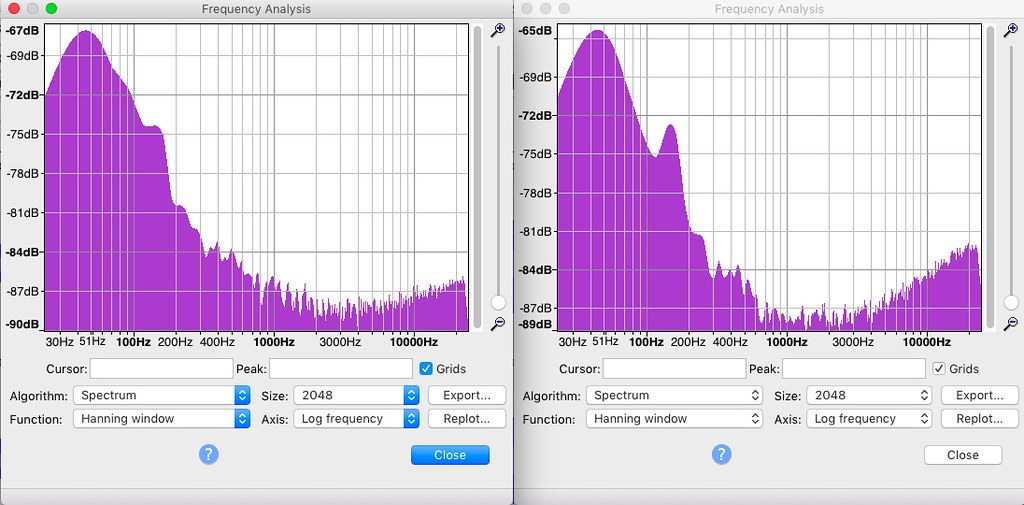I recorded some test tones and part of a song at 15 ips using a variety of tapes as a distinctly unscientific approach to see if I can determine which tape the A3440 is most accurately biassed for so that I can avoid calibrating it (I'm sure
@Werner will be shaking his head at this!

).
If you fancy partaking in a blind test I've included a link to the recordings at the bottom of this post (the download is about 540MB in size and the link expires in 7 days).
The test track consists of sine tones recorded at -10dBVU (30Hz, 40Hz, 50Hz, 60Hz, 80Hz, 100Hz, 200Hz, 400Hz, 1kHz, 2kHz, 4kHz, 8kHz, 10kHz, 12kHz, 15kHz, 16kHz and 20kHz), followed by Periodic Pink Noise recorded at 0dBVU, followed by part of a song recorded at a level where the VU meters briefly touch but never exceed 0dBVU.
Each sine tone lasts for 5 secs and is bookended by 2 secs of silence. The Periodic Pink Noise lasts for 10 seconds.
Note that on the "Tape D" file the 12kHz and 16kHz tones are missing and some of the other tones have been shortened to 2 seconds, this is because this particular tape was short so I had to reduce the running time of the playlist to fit.
The runners and riders are:
- Maxell UD 35-90 (bought sealed, I opened it 10 years ago but never recorded on it, so I’m classing it as virgin tape stock),
- Maxell XL1 35-90B (bought sealed, I opened it 10 years ago and only recorded on part of it, I used the remaining unrecorded section for this test and am again classing it as virgin tape stock),
- Ampex 456 (bought used as part of a job lot, I baked it in my oven last week so I could listen to was on it before trashing the tape and re-using the metal spool, but it had already been erased so I recorded on it for this test out of curiosity),
- RTM LPR-90 (bought new a few weeks ago, virgin tape stock).
I have also included two 'Control' files, the actual digital master file of the test track, and the test track after being passed through my recording chain (DAC>Amp>A3440>ADC) so that you can judge the transparency and channel matching of the A3440's input and output circuitry without any tape stock involved.
I set my ADC’s input level at 12 o’clock, this records 0dBFS peaks from my DAC at approx -5.8dBFS. I have therefore reduced the output level of the digital master file included in the download bundle by about -5.8dBFS to level-match it to the ADC captures as best I can.
The digital master file is 24-bit/44.1kHz. The ADC captures are 24-bit/48kHz. (48kHz is the lowest sampling rate my ADC captures at).
The same record and playback levels were used for each tape, however some tapes have higher MOL than others. I have not corrected for this.
At the start of each of the four tape files you will hear approx 5 secs of Input noise, followed by 5 secs of virgin tape noise, followed by 5 secs of recorded tape noise. At the end of each file you'll hear the same but in reverse order.
Maybe my ears are growing old but I think all four tapes sound remarkably similar, I was expecting to hear larger tonal variations between them. I'm interested in what you think?
https://we.tl/t-BMx9EodoBz
WARNING: I SUGGEST PLAYING THE TRACKS IN SOFTWARE THAT DISPLAYS THE WAVEFORMS SO THAT YOU HAVE ADVANCE WARNING OF THE 0dBVU PERIODIC PINK NOISE AS IT'S BLOODY LOUD! 

Have fun!


